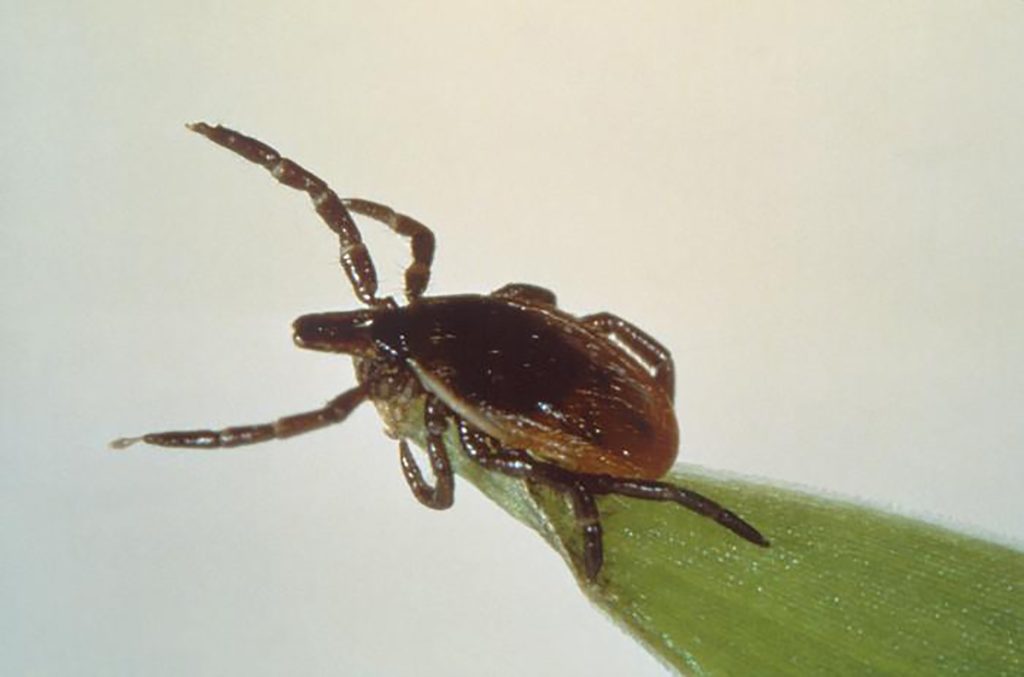Increased Tick Activity: Effective Ways To Prevent Tick Bites And Diseases

Welcome to your ultimate source for breaking news, trending updates, and in-depth stories from around the world. Whether it's politics, technology, entertainment, sports, or lifestyle, we bring you real-time updates that keep you informed and ahead of the curve.
Our team works tirelessly to ensure you never miss a moment. From the latest developments in global events to the most talked-about topics on social media, our news platform is designed to deliver accurate and timely information, all in one place.
Stay in the know and join thousands of readers who trust us for reliable, up-to-date content. Explore our expertly curated articles and dive deeper into the stories that matter to you. Visit Best Website now and be part of the conversation. Don't miss out on the headlines that shape our world!
Table of Contents
Increased Tick Activity: Effective Ways to Prevent Tick Bites and Diseases
Ticks. The tiny arachnids that can cause big problems. With warmer weather arriving, reports of increased tick activity are flooding in, prompting concerns about Lyme disease and other tick-borne illnesses. This isn't just a concern for hikers and outdoor enthusiasts; ticks can be found in suburban yards and even urban parks. Understanding how to protect yourself and your family is crucial. This article will guide you through effective strategies to prevent tick bites and the diseases they carry.
Why are ticks so prevalent this year?
Several factors contribute to fluctuating tick populations. Mild winters allow more ticks to survive, while abundant rainfall creates ideal breeding grounds. Increased deer populations, a primary host for many tick species, also play a significant role. This perfect storm of environmental conditions means vigilance is key.
Understanding the Risks: Tick-Borne Diseases
Tick bites aren't just itchy nuisances; they can transmit serious diseases. Lyme disease is perhaps the most well-known, causing a range of symptoms from fever and fatigue to joint pain and neurological issues. Other tick-borne illnesses include:
- Anaplasmosis: Characterized by fever, headache, muscle aches, and chills.
- Babesiosis: Causes flu-like symptoms, including fever, fatigue, and chills. Can be particularly dangerous for individuals with weakened immune systems.
- Ehrlichiosis: Similar symptoms to anaplasmosis and babesiosis, including fever, headache, muscle aches, and rash.
- Rocky Mountain Spotted Fever: A potentially life-threatening illness causing fever, headache, rash, and muscle pain.
Effective Tick Bite Prevention Strategies
Protecting yourself from ticks requires a multi-pronged approach:
1. Protective Clothing:
- Wear long sleeves, long pants, and closed-toe shoes when venturing into tick-infested areas.
- Tuck your pants into your socks to prevent ticks from crawling up your legs.
- Opt for light-colored clothing to easily spot ticks.
2. Repellents:
- Use EPA-registered insect repellents containing DEET, picaridin, IR3535, or oil of lemon eucalyptus. Always follow the label instructions carefully. [Link to EPA website on insect repellents]
- Consider permethrin-treated clothing. Permethrin is a repellent that can be applied to clothing and gear, providing long-lasting protection. Never apply permethrin directly to your skin.
3. Tick Checks:
- Perform thorough tick checks after spending time outdoors, focusing on areas like the scalp, armpits, groin, and behind the knees.
- Check pets as well, as they can bring ticks into your home.
4. Landscape Management:
- Keep your lawn mowed short.
- Remove leaf litter and brush around your property.
- Create a barrier of wood chips or gravel between your lawn and wooded areas.
5. Early Detection and Treatment:
- If you find a tick attached to your skin, remove it promptly using fine-tipped tweezers. Grab the tick as close to the skin's surface as possible and pull upward with steady, even pressure.
- Do not twist or burn the tick.
- Save the tick in a sealed container or bag in case you develop symptoms and need to identify the species.
- Monitor yourself for symptoms of tick-borne illnesses. If you develop any concerning symptoms, seek medical attention immediately.
Conclusion:
Increased tick activity necessitates proactive measures to prevent bites and the associated health risks. By following these preventative strategies and staying vigilant, you can significantly reduce your chances of contracting a tick-borne illness and enjoy the outdoors safely. Remember, early detection and treatment are crucial for managing these diseases effectively. Stay informed and protect yourself and your loved ones.
Call to Action: Share this article with your friends and family to help spread awareness about tick-borne illnesses and prevention methods. Stay safe and enjoy the outdoors responsibly!

Thank you for visiting our website, your trusted source for the latest updates and in-depth coverage on Increased Tick Activity: Effective Ways To Prevent Tick Bites And Diseases. We're committed to keeping you informed with timely and accurate information to meet your curiosity and needs.
If you have any questions, suggestions, or feedback, we'd love to hear from you. Your insights are valuable to us and help us improve to serve you better. Feel free to reach out through our contact page.
Don't forget to bookmark our website and check back regularly for the latest headlines and trending topics. See you next time, and thank you for being part of our growing community!
Featured Posts
-
 Analyzing The Superman Lex Luthor Rivalry A Dc Studios Podcast Discussion
Jul 08, 2025
Analyzing The Superman Lex Luthor Rivalry A Dc Studios Podcast Discussion
Jul 08, 2025 -
 Three Years After Launch 988 Lifeline Faces Funding Cuts To Lgbtq Youth Support
Jul 08, 2025
Three Years After Launch 988 Lifeline Faces Funding Cuts To Lgbtq Youth Support
Jul 08, 2025 -
 Cnn Explores Ashevilles Comeback A Visit To A Resurgent Mountain City
Jul 08, 2025
Cnn Explores Ashevilles Comeback A Visit To A Resurgent Mountain City
Jul 08, 2025 -
 Idf Confirms Airstrikes On Yemeni Ports Including The Galaxy Leader Ship
Jul 08, 2025
Idf Confirms Airstrikes On Yemeni Ports Including The Galaxy Leader Ship
Jul 08, 2025 -
 Asheville North Carolina A Mountain Towns Revival
Jul 08, 2025
Asheville North Carolina A Mountain Towns Revival
Jul 08, 2025
Latest Posts
-
 Texas Campsites And The Danger Of Flooding A Safety Review
Jul 08, 2025
Texas Campsites And The Danger Of Flooding A Safety Review
Jul 08, 2025 -
 Investigation Are Texas Childrens Camps Built In Floodplains
Jul 08, 2025
Investigation Are Texas Childrens Camps Built In Floodplains
Jul 08, 2025 -
 Why Air Canada And Aeroplan Are Top Choices For Us Flyers
Jul 08, 2025
Why Air Canada And Aeroplan Are Top Choices For Us Flyers
Jul 08, 2025 -
 Relief For Australian Mortgages Analysis Of The Next Rate Cut
Jul 08, 2025
Relief For Australian Mortgages Analysis Of The Next Rate Cut
Jul 08, 2025 -
 Guest Leaves Baby Shower After Infertility Joke A Story Of Hurt Feelings
Jul 08, 2025
Guest Leaves Baby Shower After Infertility Joke A Story Of Hurt Feelings
Jul 08, 2025
